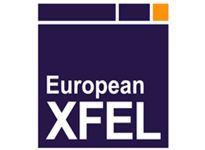EuXFEL
courtesy XFEL
General Description
The EuXFEL (European X-ray Free Electron Laser) will generate ultrashort x-ray flashes 27’000 times per second and will be a billion times brighter than the best conventional x-ray sources.
The 3.4-kilometre-long facility, located mainly in underground tunnels, runs from the DESY Laboratory in Hamburg, Germany to the town of Schenefeld (Schleswig-Holstein). The Schenefeld site hosts the research campus, where international teams of scientists will carry out experiments using the x-ray flashes. The European XFEL employs around 280 staff.
Scientists will use the x-ray flashes to map the atomic details of viruses, decipher the molecular composition of cells, take three-dimensional images of the nanoworld, film chemical reactions, and study processes such as those occurring deep inside planets. Large Swiss companies active in the food and drug industry have already expressed their interest in using the European XFEL for research.
The x-ray light is generated by an electron beam accelerated in a 1.7 km long linear tunnel to reach an energy of 1.7 GeV. The acceleration takes place in successive superconducting cavities in which an oscillating RF field transfers energy to the electrons. To generate the extremely short and intense x-ray flashes, bunches of high-energy electrons are forced to follow a slalom course through special arrangements of magnets in devices known as undulators. In the process, the electrons emit radiation that is increasingly amplified until an extremely short and intense x-ray flash is created.
The electron accelerator can drive several undulators at the same time, making it possible to generate x-ray light with different properties for different experimental stations. The European XFEL will initially provide five undulators serving ten experimental stations.
Construction of the facility has largely been supported by the host country Germany, providing 54% of the budget. The Russian Federation has contributed 23% of costs whilst the remaining member states have contributed from 1 to 3.5%.
Commissioning of the EuXFEL took place during 2017 and the facility became fully operational in 2018. Operation costs are shared among member states according to the share of the construction costs and their use of the facility.
Founding year: 2007 Members (9): Denmark, France, Germany, Hungary, Poland, Russia, Slovakia, Sweden, Switzerland, Italy (observer), Spain (observer)
EuXFEL Budget 2021: ~130 M€
Total Swiss financial contribution to the constructions costs: 17 M€ (~1.5 %)
Swiss involved research institutions: Uni BS, GE, VD, USI, PSI, ETHZ and EPFL
Procurement policy
The EuXFEL is constructed by the EuXFEL GmbH, a publicly owned German company, and follows German procurement rules. However, tendering activity must comply with European public procurement regulations.
Those published in the Official Journal of the European Union include an abbreviated English translation.
The Industry Liaison Officers of each member country are informed by email of all EuXFEL tenders with a value > 50 k€.
